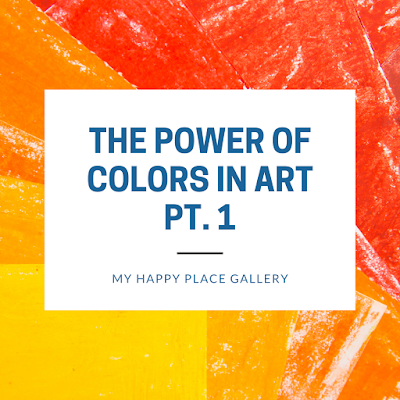The World of Watercolor
Watercolor, let’s start from the beginning!
As
you know, watercolor is a popular painting method that is created when paints
are mixed with a water-based solution. The colors are made to appear bolder or
lighter based on the amount of water that the pigment is combined with. What’s
unique about this style of art is that watercolor refers to both the medium and
the finished artwork.
Like
any other painting technique, watercolors come in a variety of styles. The
transparency of the colors allows for a clean and luminescent appearance within
its paintings. This translucent effect is what makes watercolors such a
desirable medium and separates from other artforms. Artists can paint over
color after color to create their desired look. This is possible due to the
opaqueness of the watercolors.
The
beginnings of watercolor date back to the stone age with cave paintings. People
mixed pigments to produce a paint-like substance and created visual scenes of
animals and other creatures they came across. However, it wasn’t until the
middle ages that watercolor began to gain prominence. Artists painted small
scenes and decorative symbols in the margins of illuminated manuscripts. The
vivid colors of these pigments beside the elaborate texts caused the artform to
rise to popularity. Years later, during the Renaissance, watercolor became a
more prominent and familiar style of painting. This era produced some of the
most well-known watercolor artists of its time and still today, such as
Albrecht Düre.
Despite
its popularity, watercolor still wasn’t viewed as renowned as other mediums
such as oil paintings and printmaking, which were two of the most distinguished
forms of the time. However, this all changed in the 1800s. With a heightened
excitement and interest in the world and wildlife exploration, watercolor
paintings soon became a favorite among artists when depicting nature.
Scientific publications and field guides used these paintings to represent
various creatures and plant life. One of the most notable watercolor artists of
this time is ornithologist John James Audubon, whose name you might recognize
from the Audubon Nature Institute and Audubon Zoo in New Orleans. Audubon
studied American birds and used his love for art to depict them in their
natural habitat through elaborate illustrations. These depictions helped him
create a complete pictorial record of every North American species of bird.
These
beautiful portrayals of the natural world are what put watercolor paintings on
the map. The fluidity and luminescence of the colors make this artform truly
unique. It allowed artists to capture scenes of nature as well as travel and
even portraits with a soft and ethereal quality.
Although
it has an elaborate history, watercolor painting is an easily accessible art
form that anyone can try. If you’re looking to dive into the world of art but
aren’t sure where to start, give watercolors a go. All you need are the
watercolors themselves, a paintbrush and of course, water! We suggest starting
off painting on a watercolor pad and working up to larger canvases once you’ve
mastered the technique.



Comments
Post a Comment